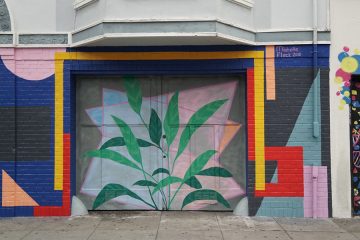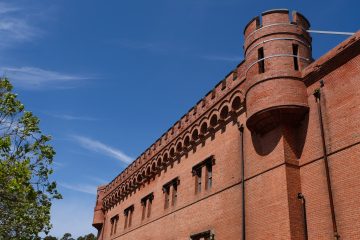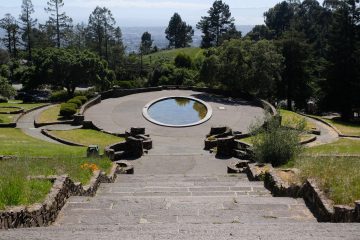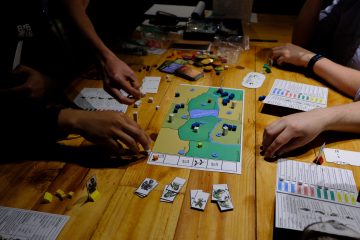Hidden East Bay Wonders: Ruins of the Belgum Sanitarium
Hidden East Bay Wonders brings you everything weird, whimsical and wonderful in the East Bay. This week: the ruins of the Belgum Sanitarium in Richmond.
Imagine a time when people rode their horses through the East Bay hills– when the avenues weren’t paved and rich tycoons looked out over the ruins of San Francisco as it slowly healed from the 1906 earthquake.
From wicker rocking chairs, farmers would look out through the Golden Gate strait into the Pacific Ocean, before the Golden Gate Bridge would become a wonder of the world.

The site where the sanitarium once stood is today canopied by trees, but would have had expansive Bay views in 1914.
In 1914, Dr. Hendrick Nelson Belgum established his Grande Vista Sanitarium in the Richmond hills—a home for drug addicts, mental patients, alcoholics, and those with “nervous disorders.” The wealthy families of Piedmont and San Francisco would stash their relatives at the Sanitarium, which was housed in a two-story stucco mansion with views of San Francisco to the southwest and Richmond to the west.
The mansion was originally built by pioneer Dr. Jacob M. Tewksbury for his daughter, Eugenia, and her second husband William Mintzer, early President of Bank of America in Point Richmond.
Magnificent and massive, with mahogany furniture, high ceilings, paneled walls, and Tiffany Chandeliers, it housed a library, day room, kitchen, living room, and a massive formal dining room. A curving staircase led to its second floor, with rooms branching off in all directions for the patients, and a huge bedroom for Dr. Belgum at the end of a long hall.
Around the property, Dr. Belgum planted, amidst the chaparral and oak, a glen of eucalyptus trees, Sabal Palms, and other exotic imports which still stand to this day. Blooms of daffodils crowned the home, along with blackberry bushes and apple orchards. An aviary provided meat and eggs, while lush gardens provided fruits and vegetables for the patients. A nearby barn housed cows for homemade butter and cheese, and a private spring water system provided water.

A rare photograph shows the mansion around the time it operated as a sanitarium. Photograph courtesy of Oakland Museum of California.
Servants were kept in nearby quarters, and a carriage house stabled horses for rides into town.
Those in far-away Richmond brave enough to visit the distant Sanitarium would report hearing beautiful music and hushed voices coming from the grounds.
The patients here were the well-to-do insane: well-educated, cultured, and affluent, they were said to hold lavish parties in the manor, play instruments, sing, dance, and stage plays.
But the isolation of the remote sanitarium began to wear on both the patients and Dr. Belgum—as the years passed, he became a recluse; some say he went mad. He died on November 8, 1948 fighting a grass fire in the hills behind the home.
Inherited by Belgum’s brothers and sister, the home was lived in for many years until, one by one, its residents left or died.
An estate sale held after the death of both siblings revealed the house had been neglected for years. Vandals picked at the remains of the mansion and eventually burned it to the ground, along with the barn, in 1977. A year later, in 1978, East Bay Regional Park District acquired the property and it became part of Wildcat Canyon Regional Park.
Today, almost nothing remains of the grandiose manor but a few stone walls and steps. But the daffodils still bloom, cattle still graze in the nearby hills, and those who visit the grounds at night report hearing the sounds of voices, trotting horses, and beautiful music.














